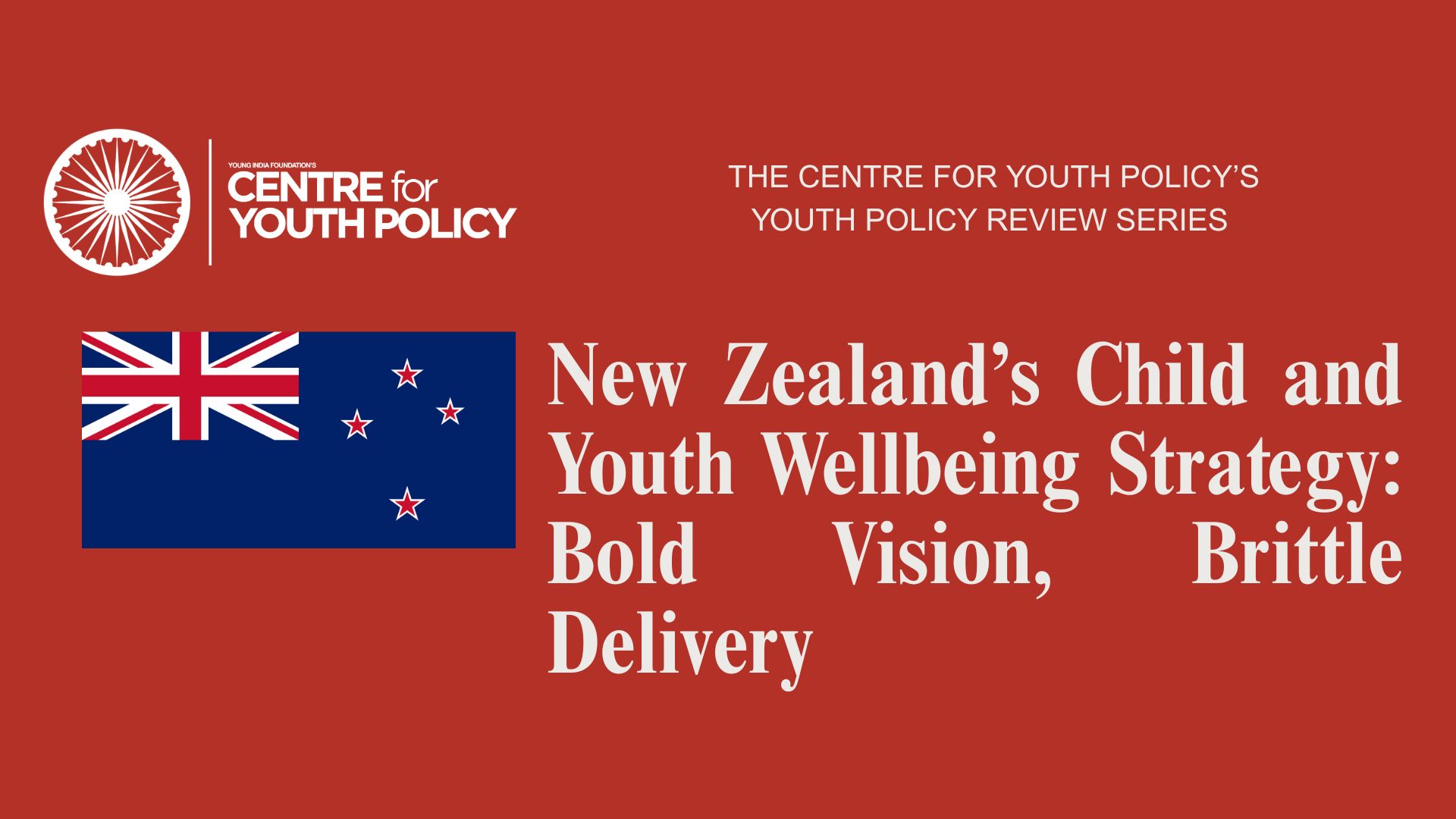In recent years, various countries have faced decreased voter turnouts, political apathy, and poor democratic health. Some countries have attempted to tackle this problem by enfranchising teenagers, particularly 16 and 17 year olds. The list of these nations includes the likes of Brazil, Austria, Scotland and Germany. This post looks at these countries' experience with lowering the voting age, it's impacts, and what we can learn.
In the twenty-first century, various democracies have observed a sharp decline in voter turnout and growing concerns about youth disengagement from politics. Elections are representative of the political health of a democracy, and voter turnouts globally have been steadily falling. In response, about a dozen countries have lowered their voting age to 16. These countries include names like Argentina, Austria, and Brazil, who now enfranchise teenagers. In Scotland and Wales too, 16- and 17-year-olds are being encouraged to vote. However, as countries continue to lower their voting age, there have been growing arguments against the enfranchisement of those who have not attained majority. Contemporary research suggests these reforms generally do not harm democracy and often help voter turnout both in the short run and in the long run. This post goes over the various countries’ implementation of a lower voting age and the insights that we can gather from these experiences.
Weighing the Costs and the Benefits
Proponents of lowering the voting age argue that it empowers young people whose lives are already heavily impacted by public policy. Sixteen-year-olds can work, pay taxes, drive, or even serve in the military in some places; hence, it is argued that they deserve representation. Supporters of such a reform argue that lowering the voting age would have a positive impact on electoral participation, leading to overall increase in voter participation. Moreover, studies show that when encouraged to vote at pre-majority ages, citizens are far more likely to vote habitually for the rest of their lives. This is known as the habit-formation effect and is one of the strongest behavioural arguments in favour of early enfranchisement.
Conversely, critics worry that many 16–17‑year-olds lack the maturity, life experience, or interest needed to vote responsibly. The standard objection is that teenagers may vote at very low rates or simply follow parents’ guidance or buckle to peer pressure. This remains the core concern of those against the lowering of the voting age. However, these concerns are diluted once data from countries that allow 16- and 17-year-olds to vote comes to the fore. Where robust empirical studies exist, they tend to dispel the notion that younger voters are uninformed or disengaged.
The Impacts of Lowering the Voting Age
This portion of the article covers specific instances where countries have lowered the voting ages, the impacts these policies have had on their political systems, and what we can learn.
The first European country to lower its national voting age to 16 was Austria. In this instance, it was seen that voters below the age of 18 were just as informed and motivated as their older counterparts. Moreover, researchers discovered that when voters are encouraged to vote from a young age, a time when they are in a protective social environment such as school or the family home, they are more likely to vote habitually later in life. Hence, in Austria, lowering the voting age led to both short- and long-term benefits. Political scientists have also noted that Austria’s change was accompanied by civic education in schools, helping reinforce democratic engagement.
Another example is Germany, which has enfranchised 16- and 17-year-olds to vote in regional and local elections. New research from Germany suggests that states with a voting age of 16 see higher turnout gains among late-teen and early-twenty age groups compared to states that kept 18. Studies analysing voter data have unequivocally stated that extending the franchise seems to raise youth engagement and general voting turnouts in the short and long run in Germany. A comparative study also found that younger voters in Germany were just as likely to express informed policy preferences and follow political debates as those above 18. Concerns were raised by certain groups, stating that the enfranchisement of the youth would equate to the rise of the far right. The justification for this concern was that young people were more likely to get exposed by social media, where politically decisive far right influences were present. As the author of this piece, I would like to say that it is pertinent to note that there are not many studies stating that people aged 16 years old are more likely be influenced by social media than an 18 or even 50 year old.
A notable case is Latin America, where the youth demographic makes up a much larger slice of the population pie. Countries like Argentina, Brazil, Ecuador, and Nicaragua now allow 16-year-olds to vote in national elections. Evidence from these contexts (and U.S. municipal experiments) is encouraging, an international review notes that “16- and 17-year-olds are avid political participants and that voting at 16 and 17 is habit-forming,” implying that early enfranchisement can mobilise civic-minded youth and make democratic systems a lot healthier in the long run. Notably, countries such as Brazil and Argentina have paired early enfranchisement with broader youth inclusion strategies and political education campaigns.
To summarise, data and insights from all over the third and first world tell us that when paired with substantial civic education, the impacts of lowering the voting age are overwhelmingly positive, and may include the following benefits-
- Higher (or at least sustained) turnout among youth cohorts: In practice, countries that lower the age rarely see overall turnout drop. In Austria and Scotland, enfranchised teens have turned out at rates comparable to other young adults. These findings indicate that lowering the age can revitalise democratic participation by capturing the “first-time voter” surge at the youngest possible age. This first exposure to voting, especially when combined with education, can anchor lifelong civic habits.
- Quality and inclusion: Empirical studies consistently report that 16–17‑year-olds are capable voters. Moreover, lowering the age gives political voice to a significant demographic group. Advocates argue this improves fairness and representation. In effect, it ensures that young citizens’ interests (in education, employment, climate, etc.) are accounted for in policy decisions. In an era where long-term challenges like climate change require intergenerational fairness, giving younger citizens a vote ensures their futures are not decided without their input. Moreover, in a study conducted in the UK , it was seen that the youth bellow the age of 18 were more enthusiastic to vote in the election and more likely to than any other age group.
- Positive civic attitudes: International research reviews show that extending the franchise does not erode civic attitudes. If anything, studies report neutral or improved interest in politics among societies that adopted the enfranchisement of 16 and 17 year old. Countries that implemented such reforms often noted improvements in political interest, civic knowledge, and trust in institutions among youth, especially when supported by civic learning.
Conclusion
The global evidence is clear: lowering the voting age strengthens democracies and has shown no negative impacts so far. Policy-makers considering this reform should take heed of the research. They should also make note of the fact that youth voters being allowed to vote while they are in school would give them an extremely attractive reason to take civic education seriously. Voting while still embedded in structured environments such as high schools allows institutional support, discussion, and reflection around the act of voting.
In summary, the balance of research supports lowering the voting age as a means of empowering youth and rejuvenating democracy. Across contexts, younger teens given the vote have proven their capability and often brought new vitality to elections. For countries seeking to bolster participation and inclusiveness, the evidence indicates that enfranchising 16-year-olds is a viable, even beneficial, reform-provided it is coupled with education and investment in youth engagement. In short, the next step forward for democratic deepening may well lie in giving voice to those who will live longest with the decisions made today.



.jpg)
 (15).png)
